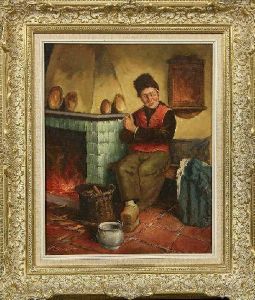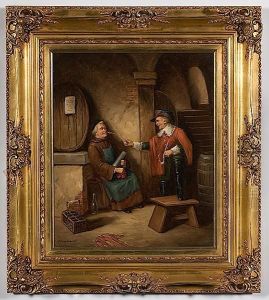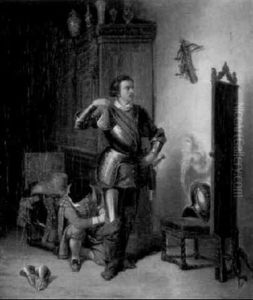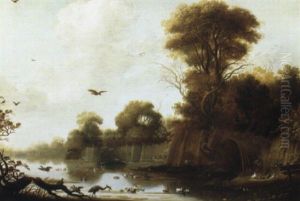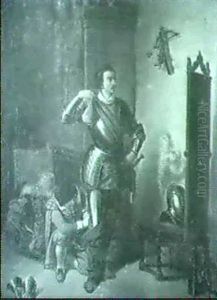Johann Jakob Eberhardt Paintings
Johann Jakob Eberhardt was a German artist known for his contributions to the field of painting and illustration during the late 19th and early 20th centuries. Born in 1862 in Germany, Eberhardt's work was deeply influenced by the cultural and artistic movements of his time, including Impressionism and the Jugendstil, the German variant of Art Nouveau. Despite the prominence of these styles, Eberhardt developed a distinct approach that combined elements of traditional German painting with the emerging modernist sensibilities of his era.
Eberhardt received his art education at several prestigious German art academies, where he was trained in the classical traditions of painting. However, as his career progressed, he began to experiment with more contemporary themes and techniques, reflecting the rapid changes in art and society. His subjects often included landscapes, portraits, and genre scenes, characterized by a keen attention to detail, a vibrant color palette, and a subtle use of light and shadow.
Throughout his career, Eberhardt exhibited his work in various galleries and exhibitions across Germany and Europe, gaining recognition for his artistic skill and unique vision. Despite the challenges posed by the political and social upheavals of his time, including the two World Wars, Eberhardt remained dedicated to his art, continuously evolving his style and techniques. He passed away in 1944, leaving behind a legacy that has contributed to the appreciation of German art from this period. His works are now held in several art collections and museums, where they continue to be studied and admired for their beauty and historical significance.
